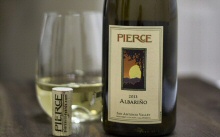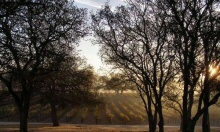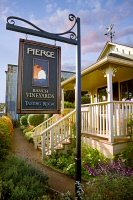|
 If one compares the wine grape growing process to a novel, the harvest is by far the denouement of the story. This is the point where the developing plot of the story (in our analogy here, this would be the development of the grapes on the vines) fully comes to light (seen here as the picking of the grapes that will ultimately be turned into wine). If one compares the wine grape growing process to a novel, the harvest is by far the denouement of the story. This is the point where the developing plot of the story (in our analogy here, this would be the development of the grapes on the vines) fully comes to light (seen here as the picking of the grapes that will ultimately be turned into wine).
There's no disputing that in both novels and on grape vines, this is a very important time. After all, you've been waiting for this moment while reading a novel or waiting for grapes to ripen. No wonder this point in the process for both receives most of the attention.
However, there's another time often overlooked, or at least downplayed in importance, at times. This is the period in the wine grape growing experience can be compared to the literary equivalent of a climax in a story. This period in winemaking is called veraison.
 Veraison is a French term to describe the onset of ripening in the wine grapes on the vine. The official definition for it is the changing of the color of the grape berries. However, there's a lot more to this time on the vine. Veraison represents the transition from berry growth to berry ripening, and there a many changes occurring in the development of the berries during this period. As in a novel, this is the time of building momentum reaching a zenith. Veraison is a French term to describe the onset of ripening in the wine grapes on the vine. The official definition for it is the changing of the color of the grape berries. However, there's a lot more to this time on the vine. Veraison represents the transition from berry growth to berry ripening, and there a many changes occurring in the development of the berries during this period. As in a novel, this is the time of building momentum reaching a zenith.
This critical phase is a physiological stage in the vine life cycle marked by a change in appearance and hardness of the grape berry. From a technical standpoint, the onset of veraison for wine grapes marks the end of the grape skin cell division. Once veraison is finished, the grape skin cell number is fixed. Chemically, this is also a time when there is a change in the acids and sugars of the grapes. Basically, what occurs is that acidity in the grape decreases and there is an increase in sugar concentration. So the grapes are starting to ripen at this time of the growing process.
 Physically, the grapes are changing color – even the white wine grapes. Of course, the onset of veraison is more prominent with red wine grapes changing from green to purplish. But the grape clusters do not change color uniformly, so often there will be a period of semi-coloration in the clusters. And the color variation occurs in white wine grapes as well. They change from green to a golden yellow hue. Physically, the grapes are changing color – even the white wine grapes. Of course, the onset of veraison is more prominent with red wine grapes changing from green to purplish. But the grape clusters do not change color uniformly, so often there will be a period of semi-coloration in the clusters. And the color variation occurs in white wine grapes as well. They change from green to a golden yellow hue.
But there's more to veraison than just changing colors. This is also a time of change of berry hardness. At the start of veraison, the berries are very firm and hard. At the end of the process they will be plump and pliable enough that you can squeeze them between your fingers.
And as with a climatic revelation in a novel, veraison is also the time in the process when the grapes will develop their most complexity, which will result in characteristics of wine to be made from them. Ask any winegrower or winemaker, and they'll tell you that mid-summer, which is when the veraison stage occurs, is an exciting time for them. As they see the evolution of the grapes and begin to taste them, they are already able to envision the wines they will soon be crafting.
However, each grape variety will ripen through veraison at different rates, which also directly impacts when grapes will be harvest. For example, Sauvignon Blanc is one of the earlier grape varietals to experience veraison and ultimately ripen. Therefore it will end up being one of the first varietals to be harvested at the end of the growing season, in late summer or early fall, depending on the year. Pinot Gris is another early ripening varietal, followed by Pinot Noir and Chardonnay. The later ripening varietals are those you would probably expect when you consider their concentrated compositions. Merlot, Zinfandel, Syrah, and Cabernet Sauvignon all experience veraison later and end up being the last grapes to be harvested.
The harvest is the time in the wine grape growing process which receives most of the glory and attention, and it's wrapping up in Monterey County at the time you are reading this article. But it was the veraison phase a few months ago that advanced the 2016 wine grape story to a conclusion.
|